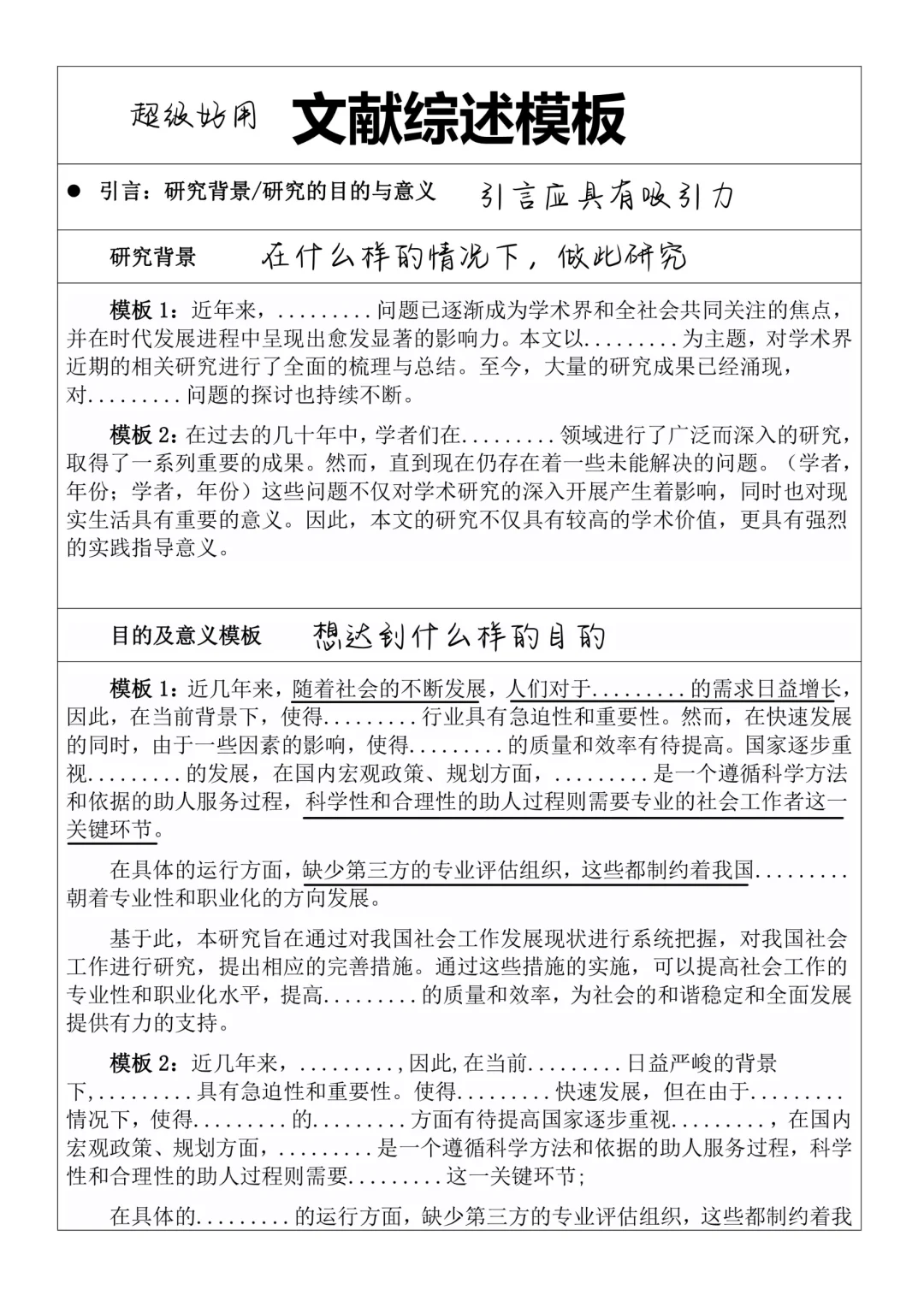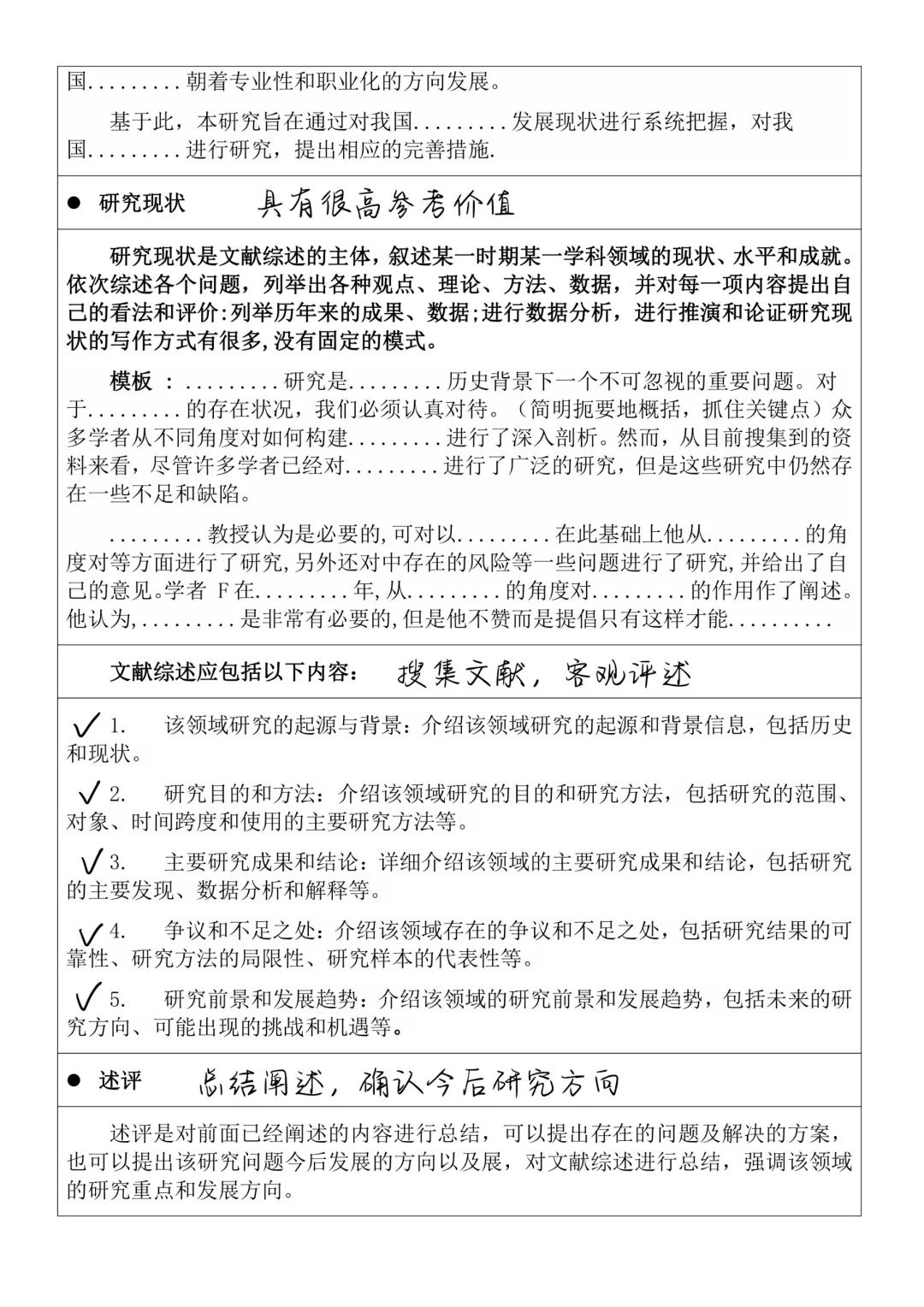A Personal Guideline about MIEC FYP#
本文的内容主要基于笔者个人经验与 Maynooth Moodle 中提供的关于 Final Year Project 的 Handbook 的总结和整合,仅供参考,也欢迎任何人对于文章进行补充和勘误。
Time Table#
| Time | Task |
|---|---|
| 15th of March, 2024 | Interim video presentation |
| 26th of April, 2024 | Draft Project report due |
| 30th of April, 2024 | Project video due |
| 8th -13th May, 2024 | Project interviews to take place |
| 20th of May | project grades due |
Penalties will be applied to late project submission as follows: *1% deducted from final grade per day late.
Paper Format#
Your report, including the title page, should not exceed 20 pages (excluding references and appendices). You must use A4 page size, 11-point font for your main text, with a line spacing of 1.15, and margins of 25mm.Your appendices are not included in this limit – they make take as much space as is required, but you cannot expect markers to read them in the same detail as they do the main body of the report. They must be included in separate files (as detailed above under Assessment).
您的报告(包括扉页)不应超过 20 页(不包括参考文献和附录)。 您的正文必须使用 A4 页面大小,11 号字体,行距为 1.15,页边距为 25 毫米。您的附录不包括在这个限制中 - 它们会占用所需的空间,但您不能 希望标记者能够像阅读报告正文一样详细地阅读它们。 它们必须包含在单独的文件中(如上面评估部分所述)。
Word#
可以看看 Using Zotero in your Project - Anxiu's Note 关于使用 Word 和 Zotero 联动完成引用的工作。
Latex#
学校没模板 .....,以后有遇到这种情境一定会来补这篇的!(大概
Paper Content#
Abstract#
- The abstract must be an accurate reflection of what is in your report.
- Your abstract must be self-contained, without abbreviations, footnotes, or references. It should be a microcosm of the full report.
- Your abstract must be 150-250 words written as one paragraph, and should not contain displayed mathematical equations or tabular material.
- Ensure that your abstract reads well and is grammatically correct.
-
The abstract must cover: motivation, the problem statement, the approach, your results, and your conclusions.
-
摘要必须准确反映报告中的内容。
- 您的摘要必须是独立的,没有缩写、脚注或参考文献。 它应该是完整报告的一个缩影。
- 您的摘要必须为 150-250 个字,写为一个段落,并且不应包含显示的数学方程或表格材料。
- 确保您的摘要可读且语法正确。
- 摘要必须涵盖:动机、问题陈述、方法、结果和结论。
Introduction#
- Topic: Introduction to the topic addressed in the project
- Motivation: Why would one care about the problem and the results? Cite appropriate references in this section. Explain the high-level, abstract problem that your project addresses. Explain what you are trying to achieve in a way that leads naturally into the next section.
- Problem statement: Describe the technical problem needed to be solved in your project. Note that most projects solve both a more abstract, high-level problem and a specific, technical problem: your problem statement is the detailed technical problem (your motivation should cover the more abstract high-level problem).
- Approach: summarise how you addressed solving the problem. Provide an overview of how you analysed the problem, how you designed a solution, and how you evaluated your solution. (e.g. use of models, simulation, prototypes, real-world experiments, cases-studies, etc.). What important variables did you control, ignore, or measure in your evaluation.
- Metrics: describe how you are going to evaluate your work.
-
Project: list, and briefly describe your significant achievements in the project (probably 3-5 of these in a typical project). If you have come up with any contributions to the state-of-the-art, make sure to include them here.
-
主题:项目中讨论的主题的介绍
- 动机:为什么人们会关心问题和结果? 在本节中引用适当的参考文献。 解释您的项目要解决的高级抽象问题。 以自然引导下一部分的方式解释您想要实现的目标。
- 问题陈述:描述您的项目中需要解决的技术问题。 请注意,大多数项目既解决更抽象的高级问题,又解决更具体的技术问题:您的问题陈述是详细的技术问题(您的动机应该涵盖更抽象的高级问题)。
- 方法:总结您是如何解决问题的。 概述您如何分析问题、如何设计解决方案以及如何评估解决方案。 (例如使用模型、模拟、原型、现实世界实验、案例研究等)。 您在评估中控制、忽略或测量了哪些重要变量。
- 指标:描述您将如何评估您的工作。
- 项目:列出并简要描述您在项目中取得的重大成就(典型项目中可能有 3-5 个)。 如果您对最先进的技术做出了任何贡献,请务必将其包含在此处。
Technical background (all material to be cited correctly)#
[!TIP]
我更愿意称此部分为 Relative Works.
- The purpose of this chapter is to show your depth and breadth of reading and understanding of the problem domain
- Include two sections:
- Topic material (research material, if used, from published journals and conference proceedings; less academic publications, if required by the project, from other sources) – for example, what other work researchers have done already in this area, what results they have produced, what work has been done in related areas, what software or hardware already exists to solve this or similar problems, etc.
- Technical material (from any source: including books, websites).
-
Note that material relating to the motivation or non-technical background should NOT go here, but rather in the introduction.
-
本章的目的是展示您对问题领域的阅读和理解的深度和广度
- 包括两个部分:
- 主题材料(研究材料,如果使用,来自已出版的期刊和会议记录;较少的学术出版物,如果项目需要,则来自其他来源)——例如,其他研究人员在该领域已经做了什么工作,他们取得了什么成果 产生了什么,相关领域已经做了哪些工作,已经存在哪些软件或硬件来解决这个或类似的问题等等。
- 技术材料(来自任何来源:包括书籍、网站)。
- 请注意,与动机或非技术背景相关的材料不应该放在此处,而应放在简介中。
The problem (or user requirements)#
- The purpose of this chapter is to clearly explain the technical problem and/or identify the user requirements
- Provide any model(s) of the problem (e.g., equations, simulations, ERD’s, UML use cases & scenarios, activity diagrams, circuit diagrams)
- Provide any analysis of the problem, leading to a greater understanding
-
There should be no decisions made in this chapter
-
本章的目的是清楚地解释技术问题和/或确定用户要求
- 提供问题的任何模型(例如方程、模拟、ERD、UML 用例和场景、活动图、电路图)
- 提供对问题的任何分析,以加深理解
- 本章不应做出任何决定
The solution (design & implementation)#
- The purpose of this chapter is to clearly identify, discuss, and justify the decisions you make
- Depending on your type of project, you may not need to include all of these
- Analytical Work: equations, etc. that describe your solution
- Architectural Level: implementation diagrams, circuit diagrams, etc.
- High-Level Design
-
Low-Level Design o Implementation: discuss anything interesting here, in the case of software put full source code in an appendix or attachment
-
本章的目的是清楚地识别、讨论和证明您所做的决定的合理性
-
根据您的项目类型,您可能不需要包含所有这些
-
分析工作:描述您的解决方案的方程等
- 架构层面:实现图、电路图等。
- 高层设计
- 低级设计
- 实现:在这里讨论任何有趣的事情,如果是软件,请将完整的源代码放在附录或附件中
Evaluation#
How well does your solution solve the problem
- Results
- Explanation of results
- Analysis of results
- Comparison with previous solutions (if relevant)
您的解决方案解决问题的效果如何
- 结果
- 结果解释
- 结果分析
- 与以前的解决方案的比较(如果相关)
Conclusions#
[!NOTE]
Conclusion 和 Future Work.
- Identify and discuss the implications of your work.
- If you made a contribution to the state-of-the-art, clearly identify it here.
- Discuss whether your results are general, potentially generalizable, or specific to a particular case.
- Identify threats to the validity of your results (e.g., limitations, risks introduced by your approach)
- Discuss your project approach
-
Discuss future work, based on what you have done (and not done)
-
确定并讨论你的工作的影响。
- 如果您对最先进的技术做出了贡献,请在此处明确指出。
- 讨论您的结果是一般性的、具有潜在普遍性的还是针对特定案例的。
- 识别对结果有效性的威胁(例如,您的方法带来的限制、风险)
- 讨论您的项目方法
- 根据您已完成的工作(和未完成的工作)讨论未来的工作
References#
[!NOTE]
一个推荐的引用整合工具,提供了多种格式已经优秀的查找引擎:MyBib
- You should include a list of all cited works here. Use standard guidelines for these (e.g., IEEE guidelines, APA guidelines) as advised by your supervisor.
- The best references are peer-reviewed publications and books.
- Note: don’t just give a URL for a reference. At the least it must include an author (even if the company’s name), a publisher (may also be the company’s name), a title, and a date (if none available, use the date last accessed). If you have a URL for the document, include [
, accessed on: ] in square brackets at the end of the reference. - Non-reviewed material (such as blogs, Wikipedia, etc.) does not make a suitable reference, except in the case of technical material have you have been able to verify by checking their implementation (you should state how you did this).
-
Material from other publications (such as journals, newspapers, magazines, official reports, etc.) may be used sparingly, especially if important for motivating your work.
-
您应该在此处列出所有引用的作品的列表。 按照主管的建议,使用这些标准指南(例如 IEEE 指南、APA 指南)。
- 最好的参考文献是经过同行评审的出版物和书籍。
- 注意:不要只提供一个 URL 供参考。 至少它必须包含作者(即使是公司名称)、出版商(也可能是公司名称)、标题和日期(如果没有可用的,则使用上次访问的日期)。 如果您有文档的URL,请在参考文献结束时在Square Brackets中包括[
, ]。 - 未经审查的材料(例如博客,Wikipedia等)没有合适的参考,除非在技术材料的情况下,您是否能够通过检查其实现来验证(您应该说明如何做到这一点)。
- 其他出版物(例如期刊,报纸,杂志,官方报告等)的材料可以很少使用,特别是对于激励您的工作很重要的话。
Appendices#
-
Include here all extra material, e.g., your source code, project management documents (optional) including: the task list, Gantt Chart diagrams (or equivalent), discussion of any significant deviations from plan, and how you managed them, discussion of what you would do differently if you repeated the project.
-
此处包括所有额外材料,例如,您的源代码、项目管理文档(可选),包括:任务列表、甘特图(或等效图表)、对计划中任何重大偏差的讨论以及您如何管理它们、对您所做的事情的讨论 如果你重复这个项目,会有不同的结果。
Recommend Tools#
Making Diagrams#
[!tip]
作图在科研工作中扮演着至关重要的角色,它不仅是展示研究成果的主要手段,也是帮助研究者更好地理解和分析数据的重要工具。在毕业设计中,科研作图的质量直接关系到研究成果的清晰度和说服力。本节将介绍如何科学、有效地进行科研作图,并介绍一些推荐使用的工具,例如 Microsoft Excel、Python 的 Matplotlib 库、以及 R 语言中的 ggplot2。笔者亦会建议科研绘图中需要注意的一些关键要点,如配色选取等,以确保作图的质量和效果达到最佳状态。从选择合适的图表类型到图表设计和优化,来更好地完成毕业设计。
常见的流程图、柱状图、饼图、折线图等索性就不再提了。
桑基图,箱线图
TODO
Appendices#
88 【导师说这才是他想要的introduction! - 从小镇到UCL | 小红书 - 你的生活指南】 😆 bJwa6cyIXiLnwP4 😆 http://xhslink.com/jDRSJD
总体介绍
- For decades, one of the most popular idea in researh is the idea that
- Recent theoretical developments have revealed that
- A common strategy used to study sth. is to
- This reseach constitutes a relatively new area which has emerged from
- These approaches have been influential in the field bacause of
- In the past several decades, sth. have played an important role in
- There are growing appeals for
- This is the field of study that deals with
- Most of the theories of sth. are however focused on explaining
- There are three major theoretical and conceptual frameworks for
- The field has gradually broadened as
- This field of study is sometimes referred as
- This has been widely adopted in the field of
- This thesis considers the field of sth. as the main subject of its study
- One of the major topics to be investigated in this field is
- The field closely follows the paradigm of
- The field has met with great success in many problems
- This is not particularly new and has been used for many years in the field of
- This field closely follows the paradigm of
- Widely considered to be a good way to
- This has been widely adopted in the field of
问题定义
- This seems to be a common problem in
- This leads to myriad problems in
- The main problem is that
- There is a further problem with
- One primary problem with sth. is that
- The methods are not without their problems as will be discussed in
- The foremost problems are the facts that
- This makes ip for the problem of
- The field closely follows the paradigm of
- The field has met with great success in many problems
- This is not particularly new and has been used for many years in the field of
- This field closely follows the paradigm of
- Widely considered to be a good way to
- This has been widely adopted in the field of
- This seems to be a common problem in
- This leads to myriad problems in
- The main problem is that
- There is a further problem with
- One primary problem with sth. is that
- The methods are note without their problems as will be discussed in
- The foremost problems are the facts that
- This makes up for the problem of
- Most of the research in this field is aimed at solving this probelm
- This remains an open probelm in the area
- This problem has received substantial interest
- These examples highlight the problem that
- The main practical problem that confronts us is
研究现状
- There is no previous research using sth. approach
- There has been less previous evidence for
- Other studies have failed to
- To our knowledge, no study has yielded
- No study to date has examined
- Only a few studies have shown
- However, sth. has rarely been studied directly
- Moreover, few studies have focussed on
- In particular no study, to our knowledge, has considered
- A challenging problem which arises in this domain is
- These problems are difficult to handle
- A well-known problem with sth. is that it does not take into account the
- One of the problems is that it considers only the
- The key problem with this technique is
- It is usually an ill-posed problem in the case of
- This problem is well-posed and does not require to impose
- This appears as a more strainghtforward problem compared to the
- This turns out to be even more problematic because
- The problem with such an implementation is that
- This poses some problems when carrying out the
- This problem has attracted more attention in the field of
- This is a basic chicken-and-egg problem because
- Unfortunately, this approach results in problems related to
87 【导师:文献综述不是让你胡编乱写的🤬 - 慢慢咨询 | 小红书 - 你的生活指南】 😆 nWivItfNOSrXVox 😆 http://xhslink.com/swUSJD
创建日期: March 4, 2024

